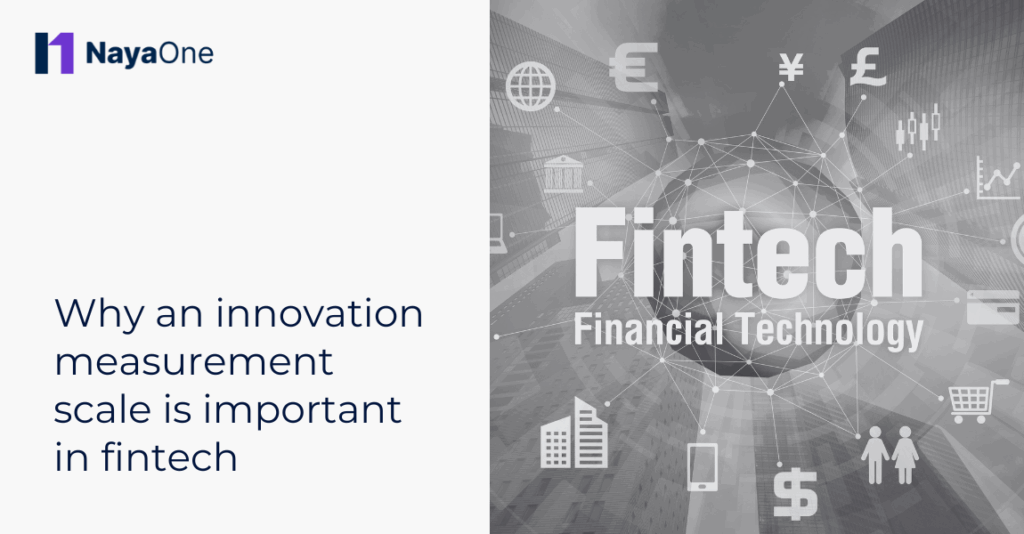Innovation isn’t just a buzzword in fintech—it’s the entire engine. Whether you’re experimenting with embedded finance, fine-tuning regtech tools, or dreaming up new ways to personalise digital banking, chances are you’re knee-deep in “new.” But here’s the million-pound question: how do you actually measure whether that innovation is working?
That’s where the innovation measurement scale comes in. Think of it as a framework or compass—something that tells you whether your ideas are truly moving the needle or just making noise. In a space where speed is everything and the competition’s always a step behind (or ahead), knowing how to measure innovation is not just helpful—it’s critical.
Let’s explore why fintechs can’t afford to wing it anymore and how the right measurement approach can bring clarity, alignment, and yes—even more innovation.
Is your innovation actually solving the right problems?
In fintech, launching new ideas isn’t the hard part—it’s launching the right ones. Every company wants to be known as “innovative,” but without clear measurement, you risk investing in flashy features that don’t solve real problems.
An innovation measurement scale helps teams cut through the noise. It lets you assess whether your initiatives are aligned with what actually matters: customer needs, business goals, compliance requirements, and market gaps. By defining what “successful innovation” looks like early on—and tracking progress along the way—you reduce wasted effort and increase the odds that your innovation will stick.
Think of it like testing a new feature in a sandbox before rolling it out to the world. Without measurement, you’re throwing darts in the dark and hoping for a bullseye.
Why don’t traditional KPIs cut it anymore?
Let’s be honest—metrics like revenue growth, MAUs, or app downloads are great… for telling you what happened after the fact. They don’t give much insight into whether an idea is worth pursuing before you scale it. That’s a big problem in a fast-moving industry like fintech.
Traditional KPIs are lagging indicators. They’re like checking your step count after the hike is over. But what if you need to pivot halfway through? What if you realise the terrain has changed?
An innovation measurement scale gives you both the macro and micro view. It doesn’t just tell you how many users signed up—it helps you understand why they’re engaging, what they’re dropping off from, and whether the problem you’re solving is still worth solving. That’s where leading indicators—like learning velocity, hypothesis validation, and test-to-launch ratios—become so valuable.
In short, if your only measure of innovation is “did it make money?”, you’re already late to the game.
What goes into a good innovation measurement scale?
Good question—and there’s no one-size-fits-all answer. But broadly, a strong innovation measurement scale includes a mix of quantitative and qualitative markers that evolve over time. Here are a few components to consider if you’re building one:
- Stage-based metrics: Different stages of innovation need different lenses. Early-stage ideas might be measured by how many hypotheses were tested. Later stages might look at adoption rates or regulatory clearance. Don’t measure everything the same way—context is key.
- Innovation accounting: This is the practice of tracking assumptions and outcomes over time. What did you think would happen? What actually happened? What did you learn? If you’re not capturing this, you’re missing the real value of experimentation.
- Cultural signals: Innovation doesn’t live in product alone. Are your teams collaborating across silos? Is there psychological safety to propose wild ideas? Can people fail safely and learn quickly? These are subtle but powerful indicators.
- Portfolio health: Are you balancing your innovation efforts across the core business, adjacent opportunities, and transformational plays? If you’re only innovating at the edges or only refining the core, your long-term resilience could take a hit.
A good scale acts as both mirror and map—it tells you where you are and where you’re headed.
How can you bake measurement into your innovation workflows?
Here’s where the rubber meets the road. Having an innovation measurement scale on paper is one thing; actually using it day-to-day is where the magic happens.
So how do you embed it without slowing everyone down?
- Build measurement into your agile sprints: Add innovation metrics to sprint reviews. For instance, did the experiment produce validated learning? Did it de-risk a key assumption? Did it produce a new insight?
- Create visible dashboards: Give teams access to live data on how innovation projects are progressing. If everyone can see what’s working and what’s stuck, you get faster feedback loops and better decision-making.
- Form a cross-functional innovation council: Having voices from product, compliance, design, and engineering in the same room ensures you’re measuring what matters—not just what’s easy to quantify.
- Use innovation KPIs in governance: Present innovation outcomes at board level. Investors and executives love numbers—but they love meaningful numbers even more. When you can show how innovation ties directly to business outcomes, you earn greater buy-in and freedom to explore.
Bottom line? Make measurement part of the process, not a final checkbox.
Making innovation count in fintech
In the fintech world, standing still isn’t an option. But sprinting in the wrong direction? That’s just as risky. If you want to innovate with intention—not just activity—you need a way to track what’s working, what’s not, and what’s worth scaling.
That’s where an innovation measurement scale becomes your secret weapon. It shifts the culture from “let’s try something new” to “let’s try something new, learn fast, and scale what delivers value.” It’s not about adding red tape—it’s about adding clarity, so creativity can actually thrive.
At NayaOne, we help fintechs and financial institutions do exactly that. With our digital sandbox and innovation toolkit, firms can experiment safely, measure impact in real time, and accelerate the journey from prototype to production. Because when innovation is measurable, it’s manageable—and far more powerful.
So next time your team rolls out a new feature, signs on a fintech partner, or tests a fresh use case, ask yourselves: how will we know this is working?
If you’re working with NayaOne, you’ll already have the answer.





